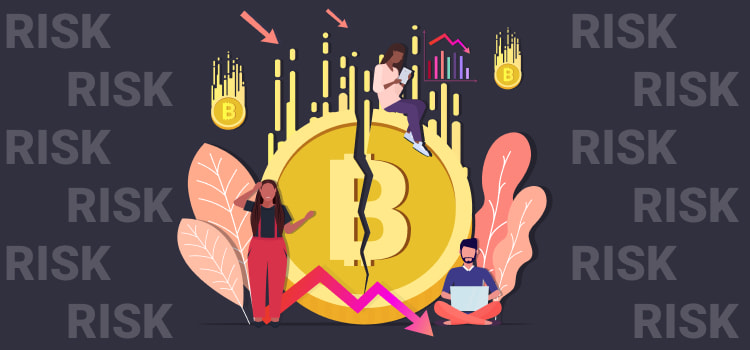In general, a niche of crypto trading is very unstable. There is a list of rules and helpers like crypto signal groups, but often you need to improvise without following any instructions.
Remember to put your emotions aside to avoid making the wrong decision that can lead to a loss of a larger amount of money than expected. You should understand that you will never avoid the risk during crypto trading, as the exchange rate varies every day.
You can’t change the system, but you can follow the beneficial aspects you need to know for the cryptocurrency exit strategy, which we will discuss today.
By the way, the theme of planning an exit when trading crypto is especially interesting for newbies because it displays all the conceptions of this profession, but there can also be a chance to learn something new, even for experienced users.
Bits of advice for proper exiting crypto trading strategy
- Be patient
As you know, crypto trading takes a very long time, during which you need to be primarily concentrated at the exchange rate of the cryptocurrency. It is not an easy way of making money, so be patient. Don’t be afraid to wait for the right and beneficial moment for entering when a clear trend will appear. Wait for the moment, when the market is heating up, work with the volume indicators usefully.

- Put your emotions aside.
Remember that there is not any kind of permanent regularity, and you cannot beat the system. When winning about 20% of your deposit today, you can be proud of yourself. Don’t be greedy and take your winnings. A greedy man is always poor. — Iranian Proverb.
Also, don’t get your hopes up for a sudden comeback after losing. We mean, it is totally up to you, but always use your common sense.
- Use limit orders
You can close your trade on your own, or it can be closed by a placed limit order. That useful feature can help you make your crypto trading process planned, structured, and productive. Also, it allows you to become more disciplined when trading without unsuccessful trying to overstep your incomes.
One technique is to place your profit level at, or a bit lower, than a significant support or resistance grade from the recent past.
You don’t have to get out of the trade-in one go. You can gradually reduce your position, thereby locking in profit, either manually or using limit orders.
Focus on taking profit and stopping loss
Before investing in crypto on the trading platform, you need to remember two rules: take a profit and stop loss. Sometimes it may be difficult not to be greedy when everything is fine, but it is always needed to calm down, close the deal, and take your winnings.
To become a master, even at the beginning of the career, you can start with crypto signals. What is this, and how it works? Crypto signals is a guide both for experienced users and for newbies. That feature helps professional traders save their time and increase the amount of their profit. On the other hand, it is a great opportunity to develop and earn some money for newbies. Unfortunately, almost all of these groups and services have paid access.

What is the risk/reward ratio?
The risk/reward ratio (R/R ratio or R) calculates how much risk a trader is taking for a potential reward. In other words, it shows what the potential rewards for each $1 you risk on an investment are.
How to calculate the risk/reward ratio? Divide the number you expect to lose by the amount of profit you expect to get back.
It’s recommended to hold a risk-reward ratio of at least 1:2 when placing stop loss and taking profit orders. Trailing S/L can be also very handy for day traders, although it should be used cautiously since it can lead to losses if placed with too little distance. If volatility is high and the price constantly bounces back down, trailing S/L may be executed to zero-level profit reaching.
Set a limit on the allowed risk
According to the most common strategies and rules in the crypto trading game, to keep all things going well, it is allowed to lose no more than 2 percent of your account’s total equity on any one trade.
For instance, if you have 1000 dollars in your wallet, don’t lose more than 20 dollars on any trade and should set your stop loss according to that principle to protect against excessive risk.